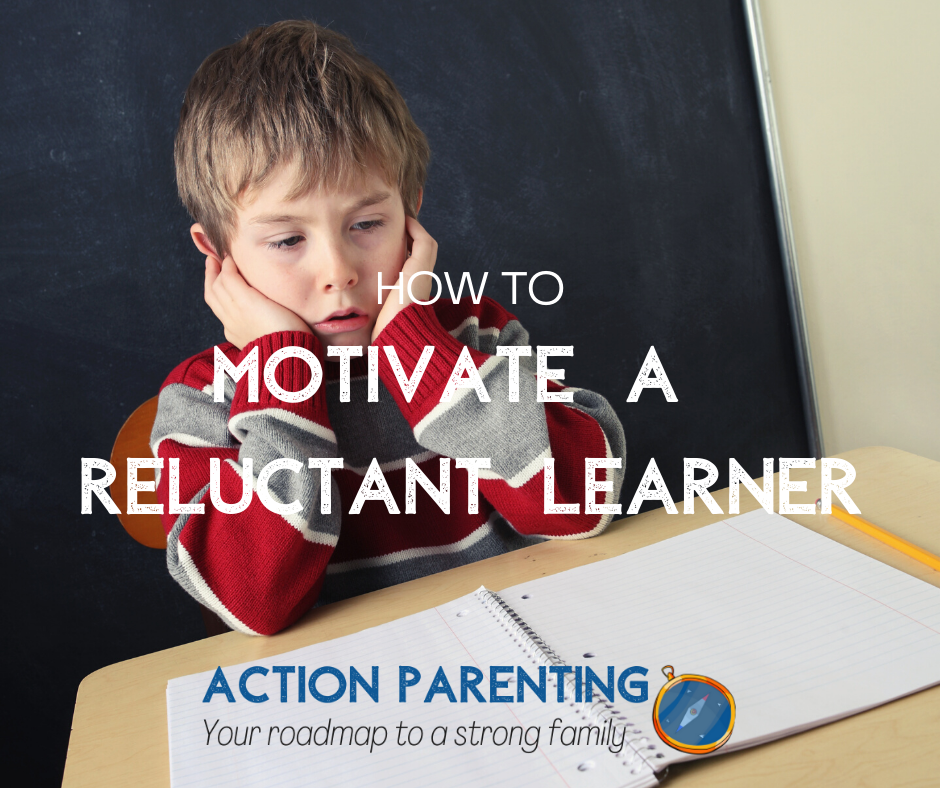Have you noticed that some kids, whether they enjoy it or not, find school easy? They can keep themselves organized and on task. Challenges test them, but they naturally draw on their resources and get the help they need to move through the challenge. They seem to be naturally motivated. It’s easy to work with them. School does not feel threatening to them, and so they typically approach school and learning from the rational and thinking part of their brain.
But have you also noticed that for other kids, for a variety of reasons, school is very challenging? They struggle to keep things organized. Can’t remember what the teacher taught or the assignment they have been given. They often struggles to stay on task and complete assignments to the best of their ability. And I don’t know about you, but often times helping a reluctant learner feels like entering a battle zone!

For a reluctant learner, school or learning can feel threatening. Academically, they may be fighting against having a learning style that does not fit with a typical classroom or possibly socially they are struggling to make friends. Whatever their experience, learning or school does not feel safe, and they are quick to move from the rational and thinking brain to the primal brain that is responsible for protecting us from threatening situations. We see the fight/flight/freeze responses come out and often we, as their parents, are the primary target.
It’s exhausting. We want to give our children the very best start to life, we know that learning how to learn is an important part of this, and it’s defeating to battle over the one-page math assignment for hours on end only to know that you will most likely repeat the same battle very soon.
And the 2020-2021 school year is not giving us parents a break. As we engage more directly with our reluctant learners this school year, I thought I’d share a few things I’ve found helpful as I work with my own reluctant learner.
Tip 1 – Schedule a Time
One thing I’ve learned in working with reluctant learners is that helping them when they are feeling frustrated and overwhelmed with learning rarely goes well. If I think about this from what’s happening in the brain, it makes sense. Often, when a child is frustrated or confused, their rational thinking brain has gone offline and their primal brain has switched on. Work flows a lot easier when we are working from our rational thinking brain. Scheduling a time to come back and work on the assignment or learning task when both of us are calm can really help things go a lot smoother.
Tip 2 – Set a Time Limit
Have you ever noticed how much work you can get done when you have limited time? The same principle can work with kids. If a child feels like the work will go on forever, they will often drag their feet and get very little done. However, setting a specific amount of time that you will work on something can help. And a tip; check in with their teacher about adjusting expectations as well. Some teachers will adjust the length of an assignment or modify the tasks to help make expectations for manageable for someone who is struggling.
Start with shorter amounts of work time and build up from there. By doing this, we are building academic stamina. Just like when you are training for race, you don’t start with the full length but rather work up in gradual increments. We can help our students build stamina by setting reasonable time goals and then gradually increasing as they master the first time goal.
Tip 3 – Validate their Progress
Validation is key to building self-esteem and internal motivation. Validation recognizes the struggle, names the emotions, and verbalizes the action or tools the person used to address the challenge they faced. For example, if my child is working through a math problem, even if they don’t get the answer correct, I will validate their attempt and the resources they used. It might sound like, “Wow! That was a challenging problem. I noticed that you started to get frustrated because you could not remember what 9×3 is but you figured it out by counting by 9’s three times!” Not only does this build your child’s self-esteem but it helps build their inner resources for the next time they encounter a challenge.
Validation takes practice. You can get more learning and practice in using validation as well as understanding how the brain impacts our physical and emotional responses in our online parenting class, “Parenting in an Anxious World.”

